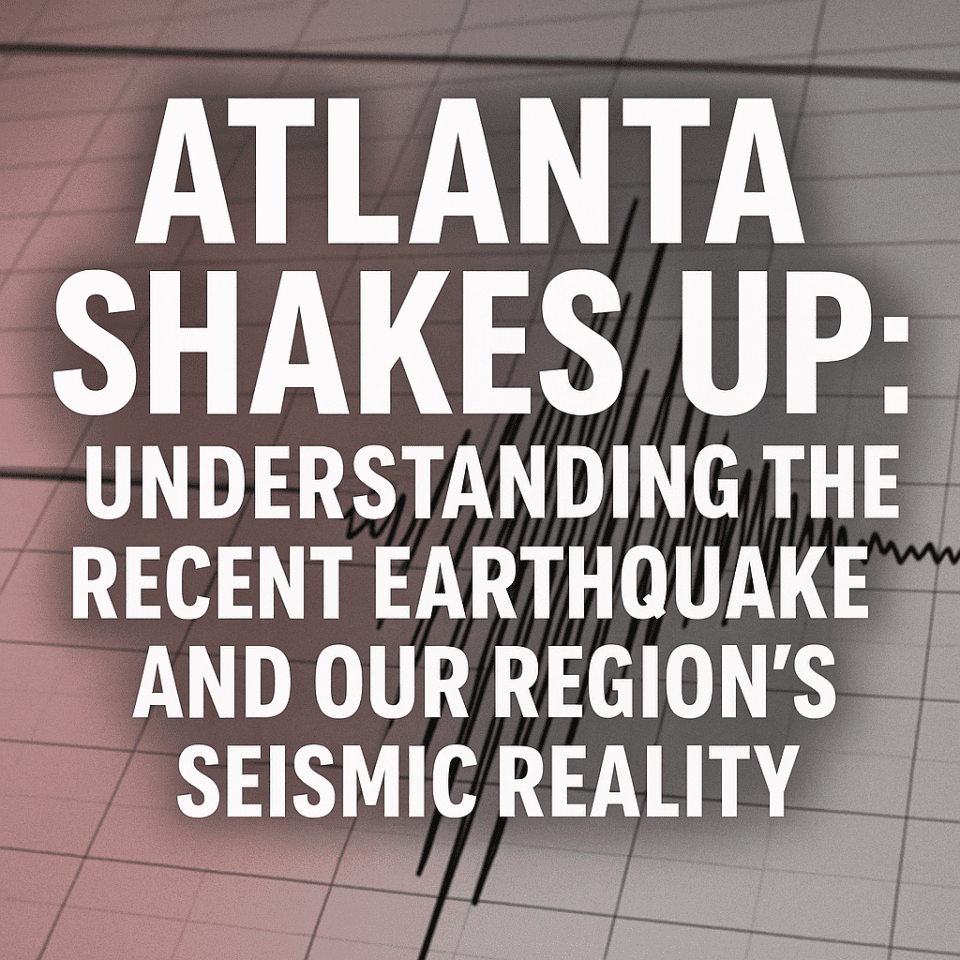
On Saturday morning, across North Georgia and metro Atlanta, the environment took an unexpected turn for many residents as an earthquake’s subtle yet noticeable shaking rippled through the region. Shortly after 9 a.m., reports began to surface of tremors felt across a wide area, a tangible reminder of the immense geological forces constantly at play beneath the seemingly stable ground. While initial assessments pinpointed the epicenter of this seismic event, registering a magnitude of 4.1 on the Richter scale, in eastern Tennessee, its effects were far-reaching, clearly perceptible to individuals throughout the Atlanta metropolitan area. This event has naturally sparked curiosity and a heightened awareness regarding the potential for seismic activity in our specific geographical location.
The occurrence of this earthquake is an essential illustration of the fact that while the western United States is often at the forefront of discussions concerning significant earthquake activity, the eastern part of the country, including zones like the Eastern Tennessee Seismic Zone, is also characterized by recurring seismic events. While generally less powerful than those experienced on the West Coast, these events are nevertheless a consistent feature of the region’s geological profile. Dr. Zhigang Peng, a highly regarded earthquake scientist based at the Georgia Institute of Technology, has provided valuable insight into this phenomenon, confirming that the recent earthquake’s location within the Eastern Tennessee Seismic Zone is significant due to the area’s “known higher seismic activity” (personal communication, May 10, 2025). The sensitivity of seismic monitoring equipment in metro Atlanta further underscores the interconnectedness of the subsurface geological structures, with a seismogram recorded in Lilburn displaying a clear and distinct spike in seismic waves precisely coinciding with the time of the earthquake. Despite its distant origin, this data provides concrete evidence of the earthquake’s impact on our local area.
A primary reason for the widespread perception of this magnitude 4.1 earthquake in Atlanta and its surrounding communities is rooted in the fundamental differences in the Earth’s crustal composition and structure between the eastern and western parts of the North American continent. Dr. Peng elucidates this point by stating, “East Coast earthquakes are often felt over a larger area than similar ones out West. That’s because the old rocks aren’t as broken up as those on the West Coast, which helps the shaking travel farther,” on 11Alive News back in February 2025. The ancient and remarkably intact bedrock that underlies much of the eastern United States acts as a more efficient conduit for transmitting seismic waves, allowing them to propagate across greater distances with less energy dissipation or weakening. In a prior interview, Dr. Peng further elaborated on this crucial geological distinction, explaining, “Because the rocks beneath us here on the East Coast are much older and stronger, [earthquakes] actually can be felt at much wider distances. So even though the activity here in the Southeastern United States is much smaller than in the Western United States, whenever there is an earthquake, it will be felt at much wider distances,” he added. This characteristic of the Eastern continental crust is a key factor in understanding why an earthquake originating hundreds of miles away in Tennessee could be distinctly felt by residents of Atlanta.
Comprehending this underlying geological reality is vital for the residents of Atlanta and the broader North Georgia region. While an earthquake with a magnitude of 4.1 is classified as a minor event on the Richter scale and is not typically associated with widespread structural damage, its extensive perception serves as a pertinent reminder that seismic activity is an inherent natural geological process that can have noticeable effects on our area. Staying well-informed about these occurrences and developing a clear understanding of the scientific principles that explain their broad reach is not only crucial for fostering a sense of preparedness within the community but also for providing a factual and scientific context for our region’s place within the larger seismic landscape of the United States. Despite its epicenter being located outside of Atlanta, the recent earthquake presents a valuable opportunity to enhance our collective understanding of the dynamic forces that continuously shape our environment, both in the immediate present and the long term. The ongoing research and diligent monitoring conducted by esteemed institutions such as the Georgia Institute of Technology are indispensable in furthering our knowledge of these natural phenomena and their potential implications for our communities and infrastructure. This knowledge empowers us to better understand and potentially mitigate any future impacts.
















